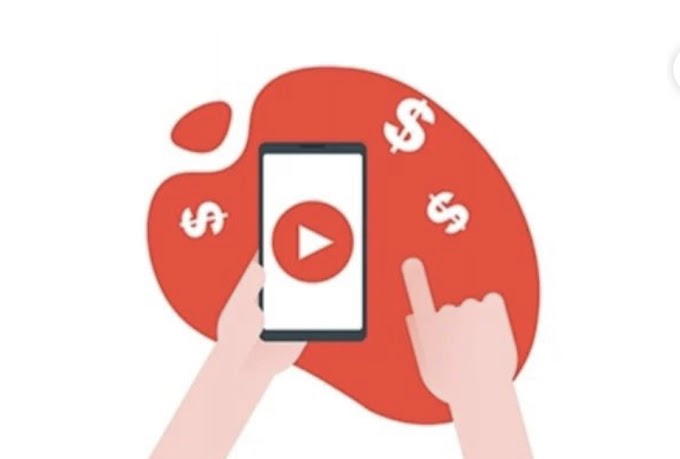The Hidden Costs of iPhone Updates
The Hidden Costs and Frustrations of iPhone Updates: Why It Might Be Time to Consider Android
iPhone updates may seem like a way to improve your device, but they often lead to frustrating issues like device malfunctions, data loss, and costly repairs. This article explores why iPhone users are facing these challenges and why switching to Android might be a better option.
In the ever-evolving world of smartphones, the iPhone stands as one of the most iconic devices, revered for its design, performance, and the status symbol it has become. Yet, for many users, the iPhone experience can be marred by one fundamental issue: its updates. While Apple has positioned itself as a leader in the smartphone industry, with its loyal customer base, the company’s practices surrounding iOS updates have come under scrutiny. These updates, which are meant to enhance the functionality and security of the device, often lead to frustrating and expensive consequences. Some users, like the writer’s friend, have experienced phones rendered useless after updating, and have been forced to pay extra fees for repairs or rely on the services of repair centers to restore their devices.
This article will explore the reasons why iPhone updates can be problematic, the hidden costs they impose on users, and why, for many, switching to Android may be a better choice.
The Initial Promise of iPhones: Quality and Longevity
When Apple first introduced the iPhone, it was celebrated for its sleek design, powerful hardware, and intuitive operating system, iOS. The device quickly became a symbol of status and sophistication, attracting millions of customers worldwide. Apple promised its users long-term software support with regular updates, ensuring that their devices would remain secure, functional, and up-to-date for several years.
For a long time, Apple delivered on this promise. The company was one of the few that continued to offer updates to older devices, far beyond the support periods of many Android phones. For users, this was a compelling reason to invest in an iPhone: knowing that their device would be supported for many years to come. Apple’s customer service and reputation for quality further cemented the iPhone as a top choice for smartphone buyers.
However, as Apple’s iPhone ecosystem grew larger, so did the company’s control over it. Many users began to notice that each new update required more from their device, often leading to slower performance, battery drain, or other operational issues. Some of these updates even caused users' devices to stop working altogether, leaving them with expensive paperweights.
The Costly Cycle of iPhone Updates
iPhone users have long been accustomed to receiving notifications urging them to update their devices. These notifications may seem like a helpful reminder, but in reality, they often present a serious risk. Many users find themselves stuck in a cycle where their devices become increasingly difficult to use after updates, leading them to seek solutions at repair centers.
One of the most common problems is the system update that fails midway or corrupts the device’s operating system. In many cases, after attempting to update, users see a screen asking them to connect their iPhone to a PC to complete the installation. However, this creates a significant problem: most iPhone users do not own a personal computer. For many, accessing a repair center or asking a friend for help is their only recourse, and this solution often comes with a hefty price tag.
The Problem with Forced Updates and Data Loss
Another issue with iPhone updates is the lack of user control. While Android devices typically allow users to choose when to update their phones, iPhones often push updates automatically, leading users to either accept the update or risk missing out on important security fixes. This forced updating can create significant stress for users, especially when things go wrong.
When an update causes a device to malfunction, many users face the prospect of losing valuable data. For example, photos, contacts, messages, and documents that have not been backed up may be permanently lost if the update causes a complete failure of the device. While iCloud offers a backup option, the process of restoring data is not always seamless and may result in users losing vital information. This risk is particularly concerning for those who rely on their phones for work or personal purposes.
The Financial Impact: Repairs and Additional Costs
Perhaps the most frustrating aspect of iPhone updates is the hidden costs that users incur when things go wrong. While Apple’s devices are known for their premium price tag, many users are shocked to find out that they are expected to pay additional fees when their phones fail after an update.
The costs associated with repairing an iPhone that fails during an update can vary, but they are often quite high. For instance, users may be forced to pay for diagnostics, replacement parts, or software restoration services. In some cases, the repair may require a complete overhaul of the device, which could cost hundreds of dollars. This is especially true if the user’s warranty has expired, leaving them with no support from Apple.
Moreover, repair services are often limited in scope, and users may be required to send their devices to Apple repair centers, causing additional delays and inconvenience. For many, the cost of repairing a failed iPhone update is so high that it may be more economical to simply purchase a new phone.
Apple’s Lack of Transparency and Accountability
Another aspect of the iPhone update process that frustrates users is Apple’s lack of transparency and accountability. When an update goes wrong, users often find themselves in a confusing and frustrating situation. Apple’s customer support is not always helpful in resolving issues, and many users feel that they are left in the dark about what went wrong and how to fix it.
Apple’s refusal to acknowledge the issues caused by updates is a point of contention for many customers. While the company is quick to promote its latest updates and features, it often fails to provide clear instructions or solutions when users encounter problems. This lack of accountability has led some users to feel as though Apple is more focused on pushing out new updates and features rather than ensuring that their existing customer base is satisfied with the product they’ve already purchased.
The Android Alternative: A More Flexible Experience
For many, the constant frustrations with iPhone updates are enough to consider switching to Android. While Android devices are not without their own issues, they generally offer a more flexible and user-controlled experience. One of the primary advantages of Android phones is that users have more control over updates. Android allows users to decide when and how they want to update their devices, which minimizes the risk of forced updates causing issues.
Furthermore, Android offers a wider range of devices at varying price points. Unlike Apple, which only offers a limited number of iPhone models, Android users can choose from a broad selection of phones that suit their needs and budget. Whether you want a high-end flagship phone or a budget-friendly model, Android provides options for everyone.
Another significant advantage of Android is its more open ecosystem. Android users have more freedom to customize their devices, install third-party apps, and access features that are not available on iPhones. This level of freedom allows users to tailor their phones to their preferences, without being restricted by the closed-off nature of Apple’s iOS.
Conclusion:
Is It Time to Switch to Android?
While the iPhone remains one of the most popular and iconic smartphones in the world, it’s clear that its update process is far from perfect. Forced updates, data loss, expensive repairs, and a lack of transparency have left many users frustrated with their iPhones. These issues have led some to question whether it’s worth continuing to invest in Apple’s ecosystem or whether they should switch to Android.
Android offers a more flexible and customizable experience, giving users greater control over updates and a wider variety of device choices. While Android phones may not be without their own challenges, they present a viable alternative for those looking to escape the frustrations of iPhone updates.
Ultimately, the choice between an iPhone and an Android phone comes down to personal preference. However, for those tired of the constant cycle of updates and repairs, it may be time to consider making the switch. After all, smartphones are meant to make our lives easier, not more complicated.











